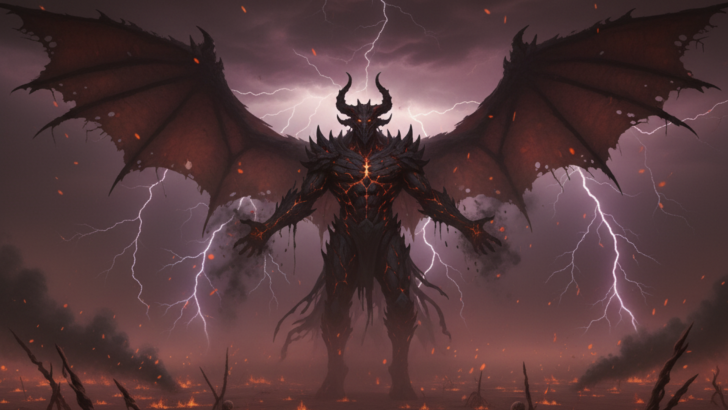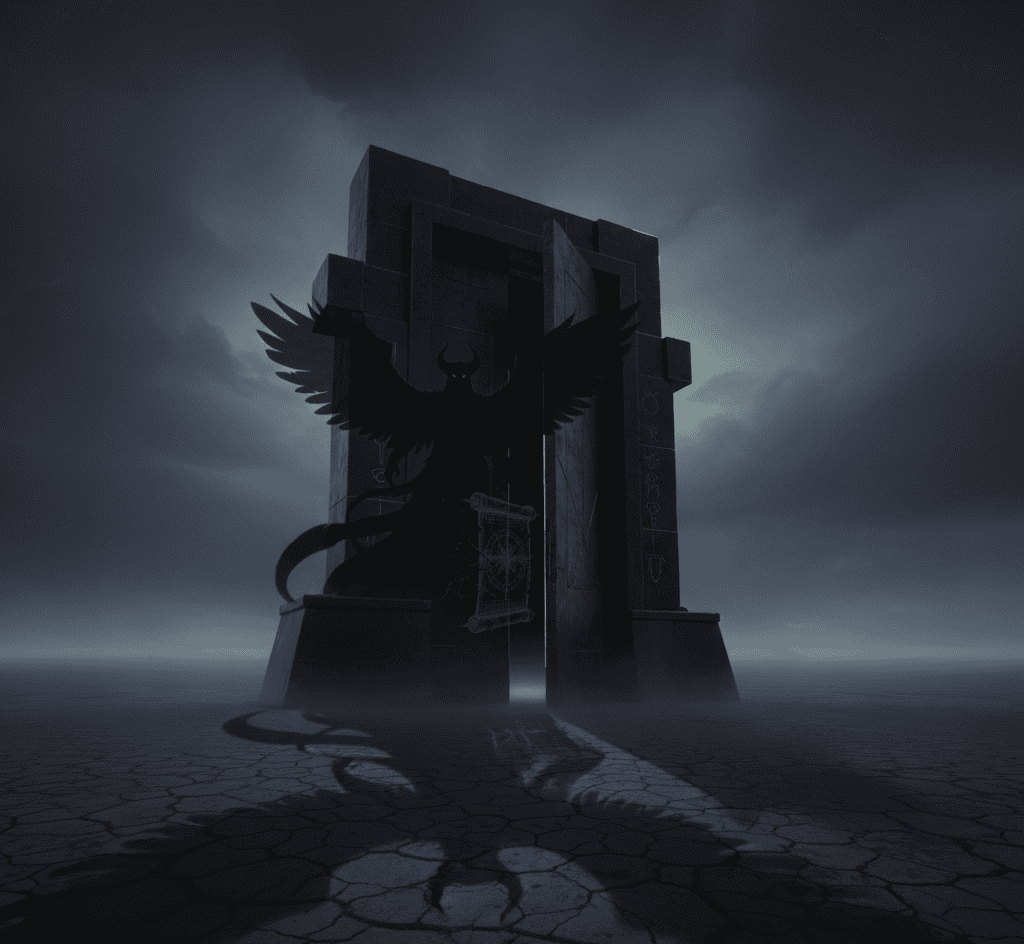If you enjoy stories that mix mystery with a hint of danger, Azazel is a name worth remembering.
He is not one of those gentle mythical figures who guide heroes or bless villages. Azazel belongs to a strange world, one made of burning deserts, wandering spirits, and dangerous knowledge.
For centuries, he has been described as a being who taught forbidden arts to humans.
His story is dramatic, eerie, and surprisingly captivating. Let us step into his world and discover why this ancient figure continues to fascinate people today.
A Spirit Born in Heat and Sand
Azazel is often imagined as a creature of the desert. Not a monster in the traditional sense, but a being shaped by harsh landscapes and forgotten places.
The desert itself feels like a perfect home for him. It is quiet, wide, and unpredictable. There are no cities or comforting lights.
Only heat, wind, and endless silence. In many ancient traditions, such places were believed to hold spirits who lived beyond the reach of ordinary men.
This is where Azazel belongs. He represents something wild and untamed. His connection to the desert also symbolizes exile and isolation.
In some stories, he is sent away from the world of the divine. In others, he chooses the solitude of the wilderness.
Either way, the desert becomes a symbol of his nature. It is both a prison and a kingdom.
A place where he waits, watches, and whispers to those who wander too far from the safety of their homes.
Stories about Azazel often feel like warnings. The desert is not a place where humans thrive.
It is a place where spirits thrive. And Azazel is one of the most memorable among them.
The Teacher of Forbidden Arts
What sets Azazel apart from many ancient spirits is his role as a teacher. He is not only a creature of the wild.
He is a giver of knowledge. But not the peaceful kind. According to tradition, Azazel taught humans things they were not supposed to know.
He revealed skills that were considered dangerous, powerful, or morally questionable.
Some stories claim he taught the crafting of weapons. Others say he revealed secrets of beauty and charm.
Some describe him teaching the art of deception or the creation of magical symbols. In every version, the idea is the same.
Azazel gives knowledge that humans desire but probably should not have. This makes him an intriguing character.
On the one hand, knowledge helps people grow. On the other hand, too much knowledge can create trouble.
The forbidden lessons of Azazel capture this tension perfectly. They reflect humanity’s curiosity as well as the danger that curiosity can bring.
In many cultures, teaching forbidden arts is a mark of rebellion. It suggests that Azazel stands apart from the order of things.
He challenges the rules set by higher powers. He shares secrets that were meant to stay hidden. This makes him both feared and fascinating.
A Spirit of Blame and Sacrifice
The name Azazel appears in ancient rituals where a goat is sent into the wilderness as part of a cleansing ceremony.
Unlike the goat used for offerings, this one is released into the wild. It carries the burdens of a community and is sent to a lonely place that belongs to Azazel.
This ritual creates a powerful image. The community transfers its mistakes and guilt onto an innocent creature.
That creature is then driven into the harsh desert where Azazel waits. The idea is not that he destroys the goat, but rather that he receives what people want to release from their lives.
The symbolism here is rich. Azazel becomes a figure tied to the concept of blame. Not personal blame but collective blame.
He becomes the container of human faults. A spirit who takes in what society wishes to forget.
Something is haunting about this idea. A creature who lives in exile receives the burdens of others. At the same time, it shows how deeply people believed in unseen forces.
They trusted that Azazel could carry away what they no longer wanted. He became a bridge between human imperfection and spiritual cleansing.
Some interpretations paint him as a villain. Others see him as a necessary figure who helps maintain balance.
Either way, Azazel stands at a unique point where myth, ritual, and human psychology meet.
Why Azazel Still Captivates Us Today
So why does an ancient desert spirit still inspire fascination in the modern world? Perhaps because Azazel represents several universal themes at once.
He embodies rebellion. He symbolizes dangerous knowledge. He stands in the lonely space between acceptance and exile.
Modern stories often explore characters who break rules to uncover the truth. They show heroes who learn secrets that reshape their world.
They portray rebels who challenge strict systems. Azazel fits right into this pattern. He is a reminder that knowledge is never simple. It can liberate, but it can also harm.
There is also excitement in stories that brush against the forbidden. People enjoy the thrill of learning about dark myths and mysterious figures.
Azazel is perfect for this. He is not a creature of horror movies. He is not a simple demon.
He is a layered being from the crossroads of myth and ritual. His story invites questions instead of giving easy answers.
In a world full of rules, Azazel represents the figure who steps outside the lines. Not to create chaos for its own sake, but to reveal truths that others might prefer to hide.
Whether he is a rebel, a guide, or a cautionary example, he remains deeply intriguing.
Exploring Azazel means exploring the darker corners of myth. It means stepping into the desert, feeling the heat, and listening to the whispered secrets carried by the wind.
His story reminds us that knowledge has power, that boundaries exist for a reason, and that some lessons change more than we expect.

自出生以来,我一直感觉到自己与神灵有着紧密的联系。作为一名作家和导师,我的使命是帮助他人在最黑暗的时刻找到爱、幸福和内心的力量。





